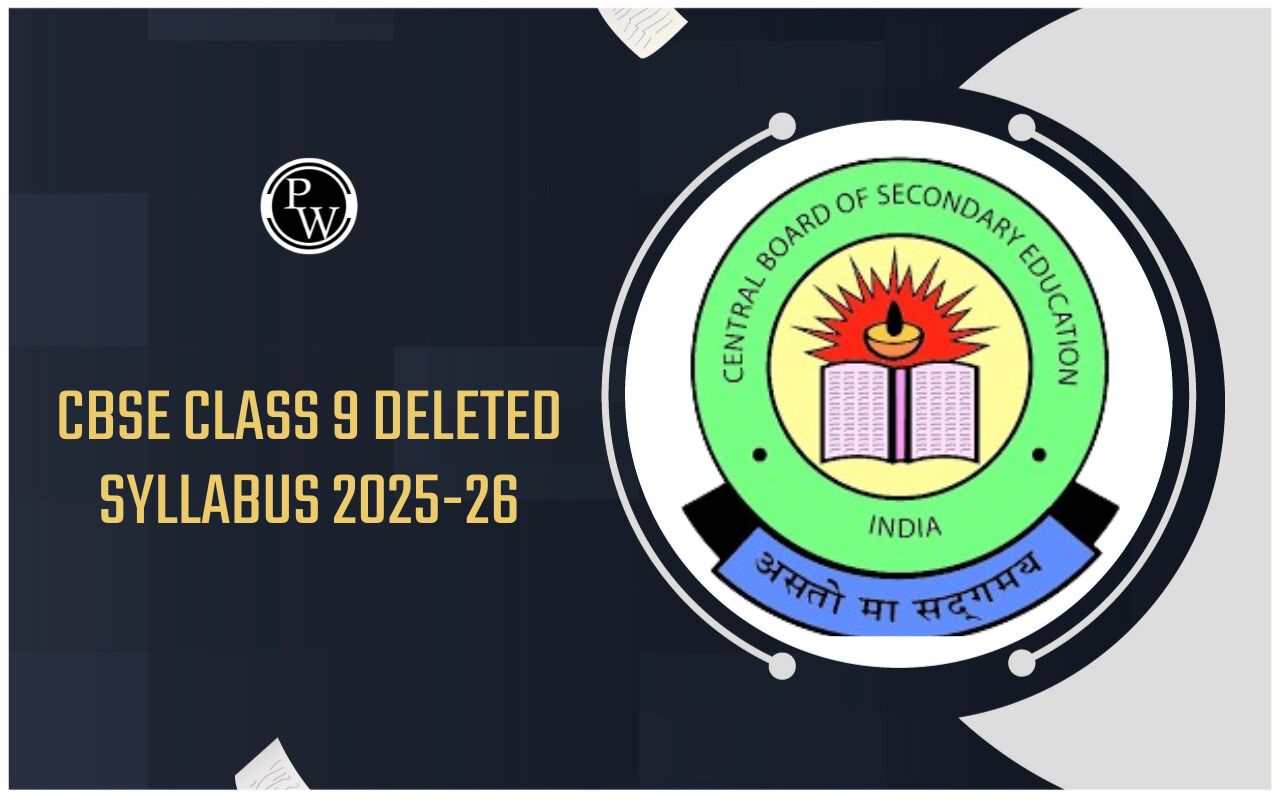
RD Sharma Solutions Class 9 Maths Chapter 3: This RD Sharma Solutions for Class 9 Maths Chapter 3 – Rationalisation is really important for Class 9 students. This Chapter is all about different algebraic identities and how to get rid of radicals in the denominator of fractions.
This process is called rationalisation. In this chapter, students learn how to simplify algebraic expressions using these identities. It's important to remember all the identities before trying any rationalisation question. RD Sharma Solutions are helpful for students because they explain how to solve problems step by step. They are created by experts at Physics Wallah. If you want to do well in exams, you can use RD Sharma Solutions for Class 9 Maths Chapter 3. Just download the PDF and start practicing.CBSE Class 9 Science Syllabus 2024-25
RD Sharma Solutions Class 9 Maths Chapter 3 Rationalisation PDF
You can find the PDF link for RD Sharma Class 9 Solutions Maths Chapter 3 on Rationalisation below. Just click the link to access the solutions and start studying. These solutions are really helpful for understanding the chapter better and practicing different problems.RD Sharma Class 9 Solutions Maths Chapter 3 PDF
RD Sharma Solutions Class 9 Maths Chapter 3 Rationalisation
The solutions for RD Sharma Class 9 Maths Chapter 3 on Rationalisation are provided below. These solutions are designed to help you understand the concepts and solve problems effectively. By going through these solutions, you can strengthen your grasp on the topic and improve your problem-solving skills. Whether you're preparing for exams or just want to enhance your understanding of rationalisation, these solutions can be a valuable resource.CBSE Class 10 Result 2024 Expected To Be Out Soon
RD Sharma Solutions Class 9 Maths Chapter 3 Exercise 3.1
Question 1: Simplify each of the following:

Solution :
(i)

(ii)

Question 2: Simplify the following expressions:
(i) (4 + √7) (3 + √2)
(ii) (3 + √3)(5- √2 )
(iii) (√5 -2)( √3 – √5)
Solution:
(i) (4 + √7) (3 + √2)
= 12 + 4√2 + 3√7 + √14(ii) (3 + √3)(5- √2 )
= 15 – 3√2 + 5√3 – √6(iii) (√5 -2)( √3 – √5)
= √15 – √25 – 2√3 + 2√5 = √15 – 5 – 2√3 + 2√5Question 3: Simplify the following expressions:
(i) (11 + √11) (11 – √11)
(ii) (5 + √7) (5 –√7 )
(iii) (√8 – √2 ) (√8 + √2 )
(iv) (3 + √3) (3 – √3)
(v) (√5 – √2) (√5 + √2)
Solution :
Using Identity: (a – b)(a+b) = a 2 – b 2(i) (11 + √11) (11 – √11)
= 11 2 – (√11) 2 = 121 – 11 = 110(ii) (5 + √7) (5 –√7 )
= (5 2 – (√7) 2 ) = 25 – 7 = 18(iii) (√8 – √2 ) (√8 + √2 )
= (√8) 2 – (√2 ) 2 = 8 -2 = 6(iv) (3 + √3) (3 – √3)
= (3) 2 – (√3) 2 = 9 – 3 = 6(v) (√5 – √2) (√5 + √2)
=(√5) 2 – (√2) 2 = 5 – 2 = 3Question 4: Simplify the following expressions:
(i) (√3 + √7) 2
(ii) (√5 – √3) 2
(iii) (2√5 + 3√2 ) 2
Solution :
Using identities: (a – b) 2 = a 2 + b 2 – 2ab and (a + b) 2 = a 2 + b 2 + 2ab(i) (√3 + √7) 2
= (√3) 2 + (√7) 2 + 2(√3)( √7) = 3 + 7 + 2√21 = 10 + 2√21(ii) (√5 – √3) 2
= (√5) 2 + (√3) 2 – 2(√5)( √3) = 5 + 3 – 2√15 = 8 – 2√15(iii) (2√5 + 3√2 ) 2
= (2√5) 2 + (3√2 ) 2 + 2(2√5 )( 3√2) = 20 + 18 + 12√10 = 38 + 12√10RD Sharma Solutions Class 9 Maths Chapter 3 Exercise 3.2
Question 1: Rationalise the denominators of each of the following (i – vii):
(i) 3/ √5 (ii) 3/(2 √5) (iii) 1/ √12 (iv) √2/ √5
(v) (√3 + 1)/ √2 (vi) (√2 + √5)/ √3 (vii) 3 √2/ √5
Solution :
(i) Multiply both the numerator and denominator with the same number to rationalise the denominator.
 = 3√5/5
= 3√5/5
(ii) Multiply both the numerator and denominator with the same number to rationalise the denominator.

(iii) Multiply both the numerator and denominator with the same number to rationalise the denominator.

(iv) Multiply both the numerator and denominator with the same number to rationalise the denominator.

(v) Multiply both the numerator and denominator with the same number to rationalise the denominator.

(vi) Multiply both the numerator and denominator with the same number to rationalise the denominator.

(vii) Multiply both the numerator and denominator with the same number to rationalise the denominator.

Question 2: Find the value to three places of decimals of each of the following. It is given that
√2 = 1.414, √3 = 1.732, √5 = 2.236 and √10 = 3.162

Solution:



Question 3: Express each one of the following with a rational denominator:

Solution :
Using identity: (a + b) (a – b) = a 2 – b 2(i) Multiply and divide the given number by 3−√2

(ii) Multiply and divide the given number by √6 + √5

(iii) Multiply and divide the given number by √41 + 5

(iv) Multiply and divide the given number by 5√3 + 3√5

(v) Multiply and divide the given number by 2√5 + √3

(vi) Multiply and divide the given number by 2√2 + √3

(vii) Multiply and divide the given number by 6 – 4√2

(viii) Multiply and divide the given number by 2√5 + 3

(ix) Multiply and divide the given number by √(a 2 +b 2 ) – a

Question 4: Rationales the denominator and simplify:

Solution :
[Use identities: (a + b) (a – b) = a 2 – b 2 ; (a + b) 2 = (a 2 + 2ab + b 2 and (a – b) 2 = (a 2 – 2ab + b 2 ](i) Multiply both numerator and denominator by √3–√2 to rationalise the denominator.

(ii) Multiply both numerator and denominator by 7–4√3 to rationalise the denominator.

(iii) Multiply both numerator and denominator by 3+2√2 to rationalise the denominator.

(iv) Multiply both numerator and denominator by 3√5+2√6 to rationalise the denominator.

(v) Multiply both numerator and denominator by √48–√18 to rationalise the denominator.

(vi) Multiply both numerator and denominator by 2√2 – 3√3 to rationalise the denominator.

Exercise VSAQs
Question 1: Write the value of (2 + √3) (2 – √3).
Solution:
(2 + √3) (2 – √3) = (2) 2 – (√3) 2 [Using identity : (a + b)(a – b) = a 2 – b 2 ] = 4 – 3 = 1Question 2: Write the reciprocal of 5 + √2.
Solution:

Question 3: Write the rationalisation factor of 7 – 3√5.
Solution :
The rationalisation factor of 7 – 3√5 is 7 + 3√5Question 4: If

Find the values of x and y.
Solution :
[Using identities : (a + b)(a – b) = a 2 – b 2 and (a – b) 2 = a 2 + b 2 – 2ab]
Question 5: If x = √2 – 1, then write the value of 1/x.
Solution :
x = √2 – 1 or 1/x = 1/(√2 – 1) Rationalising denominator, we have = 1/(√2 – 1) x (√2 + 1)/(√2 + 1) = (√2 + 1)/(2-1) = √2 + 1Question 6: Simplify

Solution :
 [ Because: (a + b)
2
= a
2
+ b
2
+ 2ab ]
[ Because: (a + b)
2
= a
2
+ b
2
+ 2ab ]
Question 7: Simplify

Solution:
 [ Because: (a – b)
2
= a
2
+ b
2
– 2ab ]
[ Because: (a – b)
2
= a
2
+ b
2
– 2ab ]
Question 8: If a = √2 +1, then find the value of a – 1/a.
Solution :
Given: a = √2 + 1 1/a = 1/(√2 + 1) = 1/(√2 + 1) x (√2 – 1)/(√2 – 1) = (√2 – 1)/ ((√2) 2 – (1) 2 ) = (√2 – 1)/1 = √2 – 1 Now, a – 1/a = (√2 + 1) – (√2 – 1) = 2Question 9: If x = 2 + √3, find the value of x + 1/x.
Solution:
Given: x = 2 + √3 1/x = 1/(2 + √3) = 1/(2 + √3) x (2 – √3)/(2 – √3) = (2 – √3)/ ((2) 2 – (√3) 2 ) = (2 – √3)/(4-3) = (2 – √3) Now, x + 1/x = (2 + √3) + (2 – √3) = 4Question 10: Write the rationalisation factor of √5 – 2.
Solution:
The rationalisation factor of √5 – 2 is √5 + 2Question 11: If x = 3 + 2√2, then find the value of √x – 1/√x.
Solution :

RD Sharma Solutions for Class 9 Maths Chapter 3 Rationalisation Summary
RD Sharma Class 9 Solutions Maths Chapter 3 FAQs
What is rationalisation in mathematics?
How can I rationalise the denominator?
Why is it important to understand rationalisation?
How can RD Sharma Class 9 Solutions for Chapter 3 help me?










